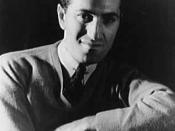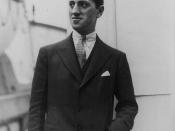Black theater is ever changing. From the early 30's and 40's during the Harlem Renaissance that is where great black theater was born. Such playwrights as Lewis Grandison Alexander, was one of the very first African American playwright and actor to appear on Broadway. Even as time progressed during the 50's, 60's and 70's when more great playwrights like Lorainne Hansberry, August Wilson, and Ntozake Shange came along, they faced severe social issues that would try to hinder the advancement of Black theater. But never fear, through perseverance they got their message out and it was received well. These playwrights are respected and praised for their work in the Black community. But with the rise of urban theater and these new era Gospel plays, that are put on are a multi million dollar industry. It makes it hard for real Black theater to survive in this world, especially because of all the stereotypes associated with the type of roles that are given and have been given to African Americans.
After 30 years of not-for-profit theater, is black theater better off today than thirty years ago? How does Black theater survive without selling its soul to the devil?
"By the 1920s, the Black literati situated in the capital of Black America, within the heart of America's cultural capital, made the breakthrough known as the Harlem Renaissance. "The dawn of the New Negro, rising to break the fetters of his stereotypical image in American society, was bursting (Powell). The most important of these communities was Harlem, the then new community of Blacks in New York. Porgy and Bess, written by George Gershwin, a white playwright, was a play about African Americans but yet and still it was not written for blacks. It was written for a white audience, downtown where it...


